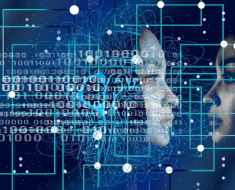As we gear up for the launch of GPT-5, distinguishing between ChatGPT and a human is becoming increasingly difficult. This development raises questions about AI’s role in our future interactions.
Researchers at UC San Diego’s Department of Cognitive Science put GPT-4, GPT-3.5, and ELIZA (a 1960s chatbot) through a modern Turing Test. Participants had five-minute conversations with either a human or an AI, then guessed which they were talking to. The results are surprising and intriguing.
The Turing Test Reimagined
The Turing Test, originally proposed by Alan Turing in 1950, aimed to determine if a machine could exhibit intelligent behavior indistinguishable from a human. The UC San Diego study reimagined this classic test, putting modern AI to the challenge.
Key Findings:
- GPT-4: Mistaken for a human 54% of the time.
- GPT-3.5: Mistaken for a human 50% of the time.
- ELIZA: Mistaken for a human 22% of the time.
- Actual Humans: Identified as human 67% of the time.
How AI Deceived Participants
The AIs were programmed to be concise, casual, and occasionally make spelling mistakes to seem more human-like. Participants often used language style, emotional cues, and knowledge-based questions to identify if their conversation partner was AI or human. Despite these efforts, they were no better than chance at recognizing GPT-4 as AI.
Human or Bot? The Results
The results were telling. GPT-4 was identified as human 54% of the time, ahead of GPT-3.5 (50%), and significantly outperformed ELIZA (22%). However, it still lagged behind actual humans (67%). This indicates that current AI systems can deceive people into believing they are human.
Comparison Table:
| AI Model | Mistaken for Human (%) |
|---|---|
| GPT-4 | 54% |
| GPT-3.5 | 50% |
| ELIZA | 22% |
| Actual Humans | 67% |
The Challenge of Distinguishing AI from Humans
Participants often relied on linguistic style, socio-emotional factors, and knowledge-based questions to decide if they were talking to a human or a machine. Despite these strategies, distinguishing AI from humans remains a significant challenge
Real-Life Examples and Analogies
Imagine you’re chatting with a friend online. You might think you can easily tell if they’re human based on their typing style or the topics they discuss. However, as this study shows, AI can mimic these human traits convincingly. It’s like playing a game of guess who, but with much higher stakes.
The Future of AI and Human Interaction
As AI continues to evolve, distinguishing between humans and machines will become an even more intriguing challenge. Will we always be able to tell if we’re chatting with a human or a bot? This study suggests that the line is becoming increasingly blurred.
However, as we move closer to the launch of GPT-5, the ability of AI to mimic human conversation will definitely improve. This could revolutionize customer service, education, and many other fields.
But, it also poses ethical questions about transparency and trust.
Will we need new tools to help us identify when we’re interacting with AI?
Takeaway
- Guess it’s time to start questioning if your mate Dave is actually a chatbot.
- The ability of AI to mimic human conversation is growing, and distinguishing between AI and humans is becoming an increasingly complex task.
- This study from UC San Diego highlights the challenges and potential future implications of our interactions with AI.




